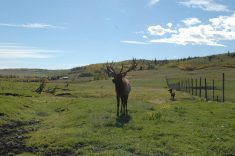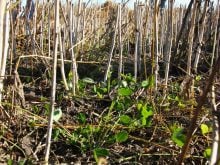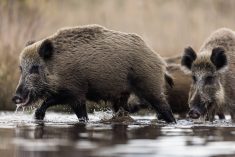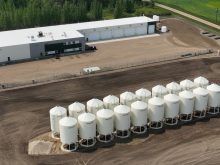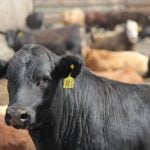Prairie farmers may one day be able to seed canola and not worry about killing frosts.
Researchers at the University of Alberta have crossed traditional spring canola grown on the Prairies with hardy winter European varieties to produce a canola that can survive in greenhouse condition temperatures as low as -18 C and still flower the same time as early spring canola.
“It may have very big benefits,” said Anne Flanagan, a University of Alberta professor who led the three-year study.
It used to be almost impossible to cross winter canola with spring canola because winter canola has a strong vernalization characteristic.
Read Also

Environmental farm group has Ottawa’s attention
In 2021, Farmers for Climate Solutions published a report on how Canada should reduce emissions from agriculture. Not long after, the federal government implemented most of the recommendations in the report.
Vernalization means the seed or seedling must be subjected to low temperatures to prompt plant development and flowering.
If researchers planted a traditional European winter canola in the spring, it would not set seed. It would grow, but wouldn’t get past the cabbageleaf-like stage.
“True winter types never flower until they’re exposed to cold temperatures.”
The vernalization requirement of winter canola made it almost impossible for scientists to do varietal work on such varieties. Work is slow because every potential line needs to be grown out and progeny from the crosses are slow to mature.
In this study, researchers used a double haploid breeding technique to develop a genetically stable line called Vern- (Vern minus). This line lacked the vernalization requirements, but retained the freeze tolerance trait.
The unexpected combination was created because one of the parent lines, a weak winter type, contained spring traits that controlled vernalization and flowering time.
“Vern- has a very high freezing tolerance,” said Flanagan, on a partial leave of absence from the university.
Plants in the study were subjected to temperatures as low as -18 C in the greenhouse and were flowering at the same time as early spring canola, she said.
In some Alberta and Saskatchewan field trials, fall-seeded canola with the Vern- trait showed strong promise.
In an Alberta Agriculture study, researchers were “very excited,” she said.
The Vern- plant survived the best in the field trial.
In a Saskatoon trial, researchers said the Vern- planted as spring canola was “much more vigorous” than others in the plot.
“It may have a very big impact,” for prairie farmers, Flanagan said.
As a bonus, the canola with the Vern- line showed other strong canola characteristics.
“A lot of other traits moved over,” she said. “The Vern line seems to be a vigorous line. It has good straw strength.”
Research will continue for another two years at the university before it is turned over to a plant breeder for development.
Flanagan said there is excitement about the potential of Vern- as a valuable breeding tool.
“It’s not just freezing tolerance we’re after, it’s all those winter traits. By starting with a cross that has all of those winter traits but flowers early, you’ve got a nice bridge between the winter and spring germplasm, so it could be very useful as a breeding tool.”




